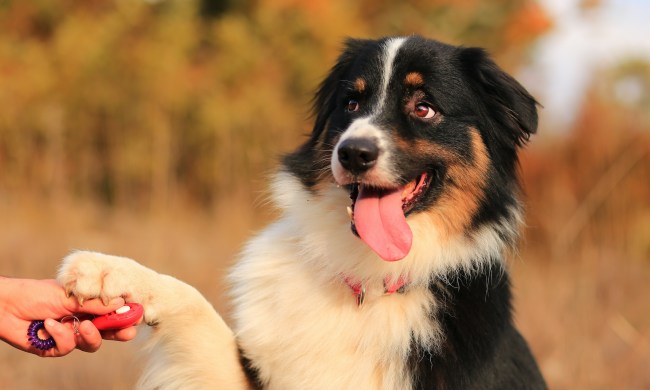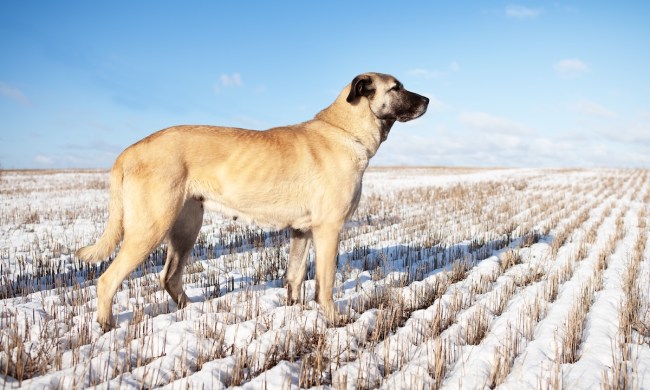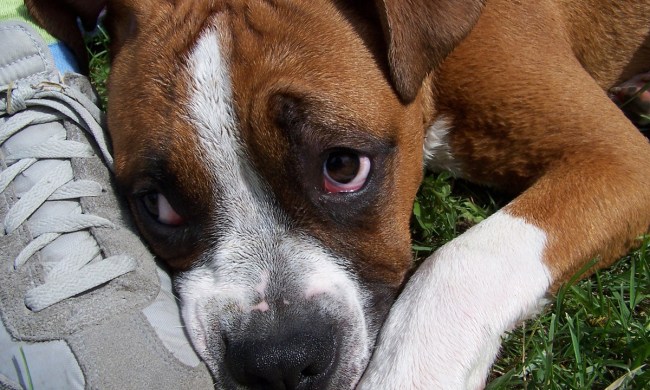Are you torn between a beagle and a pug? You might consider getting a puggle. Maybe you’re three giant steps ahead of us, met a puggle at an adoption event, and have fallen head over heels (or perhaps that’s nose over paws). As the mash-up name implies, a puggle is a mix of a beagle and a pug. The dogs can have physical and behavioral traits commonly found in these popular breeds, such as a pug’s squishy face and friendliness and a beagle’s powerful nose and curiosity.
Puggles can also inherit some health issues from these breeds. While no two dogs are alike, understanding common characteristics is an excellent early step in pet parenthood. Researching puggles is a bit complicated, though. The American Kennel Club (AKC) does not recognize the breed, so there’s no official standard. Still, decades of experience allow us to generalize about a puggle’s appearance and behavior.
What is a puggle?

A puggle is a hybrid of a beagle and a pug. A hybrid breed is distinct from a mixed breed or “mutt.” Hybrid breeds are bred intentionally using a pair of parent breeds. Cockapoos (cocker spaniels and poodles) and Labradoodles (Labrador and poodle) are other examples of hybrid breeds.
Puggles were first developed by Wallace Haven, a breeder living in Wisconsin. He wanted to create a sweet, small dog that was more energetic than a pug, but less prone to running off the property to follow a scent (hello, beagles). Notably, there’s no telling whether your puggle fits this bill precisely. Speaking with a reputable breeder, shelter, or rescue staff can help pinpoint where on the spectrum the specific puggle you’re interested in falls.
Puggles may not have the rich history of their parent breeds. Pugs have roots in ancient China and a history that likely dates back to around 400 B.C. Beagles are so much younger than pugs — as in, they date back to the 1400s and likely originated in England. However, puggles have quickly become contemporary favorites, with canine influencers Earl the Grump and Bentley the Puggle enjoying Instagram fame.
Do puggles make great pets?

Puggles are generally considered friendly pets. Their gentle demeanors make them amenable to many types of households, including ones with small children and other pets. However, don’t be fooled by a puggle’s size — they are energetic and do well in active homes. Here’s what to expect when you’re expecting a puggle.
Physical characteristics of a puggle
Lifestyle fit is an important consideration when choosing a pet. However, literal fit is also essential. Understanding a breed’s usual height, weight, and shedding habits can help you make the best decision for your family. There’s no official AKC standard. However, generally, you can expect a puggle to possess these physical traits.
- Height: 10 to 15 inches
- Weight: 14 to 30 pounds
- Lifespan: 10 to 15 years
- Coat color: black, fawn, gold/yellow, or red
- Coat length: Short
- Hypoallergenic: No*
*No dog is completely hypoallergenic. Some breeds (generally) produce fewer allergens than others, which can sometimes trigger fewer allergy symptoms in their human friends.
Puggle health
Pugs, beagles, and puggles are usually healthy dogs that can live long, happy lives. The average lifespan of a puggle is around 10 to 15 years, meaning some may live longer and others may not. Puggles are prone to some health issues common in their parent breeds, including:
- Brachycephalic syndrome, increasing the odds of breathing issues and overheating
- Skin infections that develop in folds of the skin
- Hip dysplasia, triggering mobility issues
- Obesity
- Patellar luxation (dislocated kneecap)
- Dry eye
- Musladin-Lueke Syndrome (MLS), a genetic disease common in beagles
- Thyroid problems
Pet parents can keep their puggles healthy by:
- Feeding them a healthy diet of 90% dog food
- Taking them for daily walks and engaging in active play
- Not leaving them unattended in a hot car
- Seeing shade and providing plenty of water on hot days (the latter is a must-do daily, regardless of the weather)
- Attending regular vet appointments
Puggle behavior
You don’t want to judge a book by its cover. However, puggles often act as cute as they look. They’re playful, loving, and usually good with children and other animals, making them excellent family and first pets. Though puggles have tons of energy, the affectionate breed is happy to curl up in your lap as a “thank you” following a trip to the park.
Puggles truly love their humans and are prone to separation anxiety. They may bark excessively when you’re out for long periods or engage in destructive behavior, like chewing. Your puggle may benefit from tons of exercise before you leave and a dog walker if you will be out for extended periods.
Puggles do well with positive reinforcement training from a young age (though even senior dogs can learn new commands). The breed requires some patience, though. They have a stubborn streak, so committing to working on training for a few minutes each day over several weeks or months may be necessary to help your puggle reach their fullest potential.
Final thoughts

Puggles are a hybrid breed of a pug and beagle (hence the name). The breed is relatively new and not recognized by the AKC. However, the cute mug and friendly personality have made them fast favorites. Puggles can live long, healthy lives of around 10 to 15 years. However, they may have health problems, including overheating and obesity. They can also develop separation anxiety. Ensuring your puggle gets plenty of love, exercise, attention, and healthy dog food can give your furry friend the best shot at living their best life.




